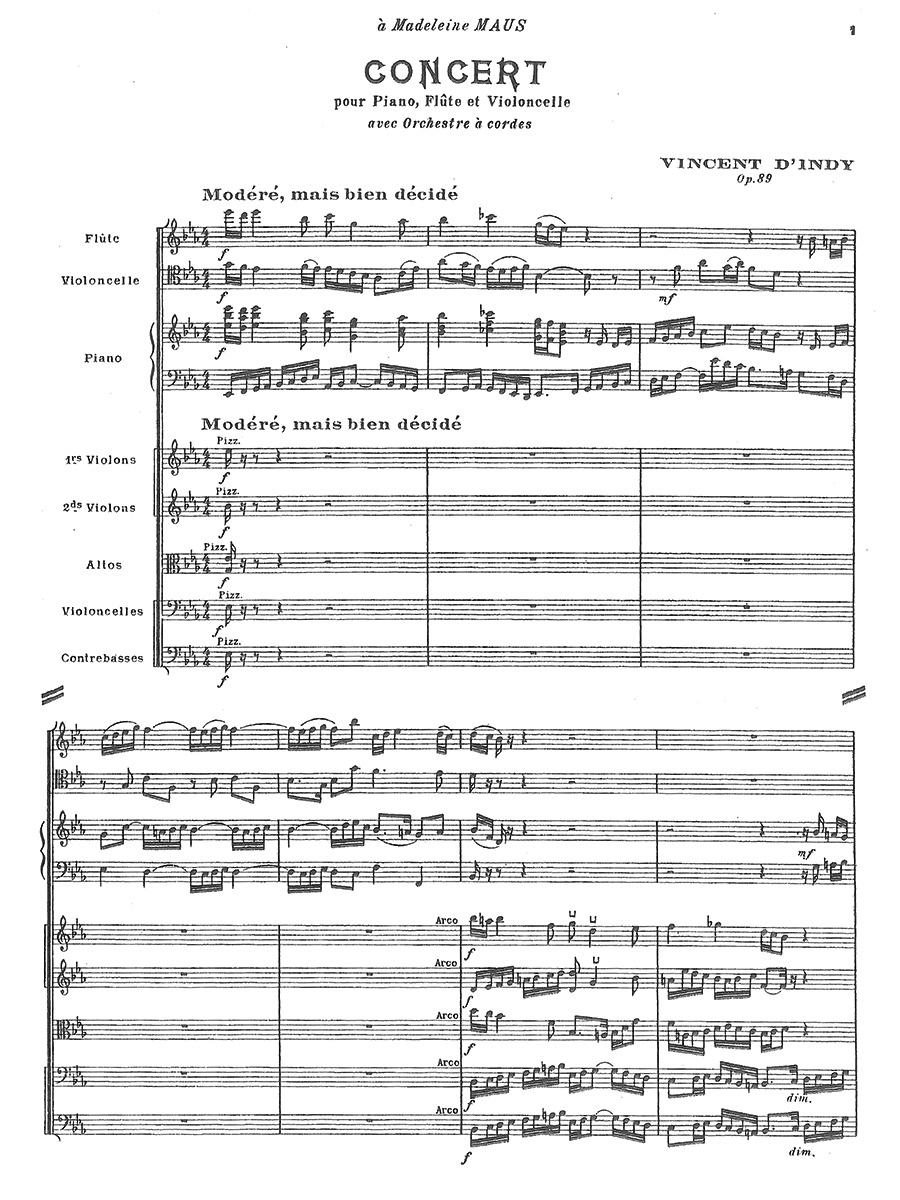Concert pour Piano, Flûte et Violoncelle avec Orchestre à cordes Op. 89
Indy, Vincent d’
19,00 €
Preface
Vincent d’Indy
Concerto in Eb Major for flute, cello and piano Op. 89
(b. Paris, 27 March 1851 — d. Paris, 2 December 1931)
Modéré, mais bien decidé p.1
Lent et espressif p.22
Lent et espressif p.42
Preface
Vincent d’Indy is one of those composers that many have heard of and yet likely cannot recall the title of a major work. This is not to suggest that his compositions are in any way substandard as compared with more lauded contemporary countrymen such as Gabriel Fauré, Claude Debussy and Maurice Ravel. It is by dint of fate that d’Indy seemed to have receded into the shadow of their success.
D’Indy was particularly interested in ancient sacred music, particularly that of Palestrina. This interest led to his founding of the Cantorum Sanctum in Paris in 1896, which promoted the traditions of Palestrina’s compositional style and supported a course of study that included intensive investigation of its application. In addition, d’Indy employed folk songs in his orchestral works and felt, as so many of the time did, the influence of Wagner.
The Concerto in Eb Major for flute, cello and piano, Op. 89 is a late work, composed in 1926, during the neo-classical movement. It exhibits many of the compositional principles of this movement: order, balance, clarity, economy and emotional restraint. The interplay between the solo group and the orchestra employs abundant call and response, polyphonic textures and a conservative harmonic approach. There are three movements, all organized along the lines of a traditional concerto grosso. With the exception of the piano timbre rather than harpsichord, the work very much captures the Baroque sound quality through balance and economy of melodic writing, the antiphonal nature of the concertino (solo instruments) and ripieno (orchestra) groups as well brief full tutti sections. The solo group alternates between three and four voices, as the piano left and right hands lines are often independent.
This is not to suggest that the Concerto is a full re-creation of a Baroque concerto grosso. It is clear that this is written in the context of the early modernist harmonic language of the 20th century, but the execution of that language is quite subtle. One might speculate that these subtleties contributed to d’Indy being overshadowed by contemporaries such as Prokofiev or Stravinsky that were seemingly more progressive.
Read full preface / Komplettes Vorwort lesen > HERE
Score Data
| Score No. | 1735 |
|---|---|
| Edition | Repertoire Explorer |
| Genre | Solo Instrument(s) & Orchestra |
| Size | 210 x 297 mm |
| Printing | Reprint |
